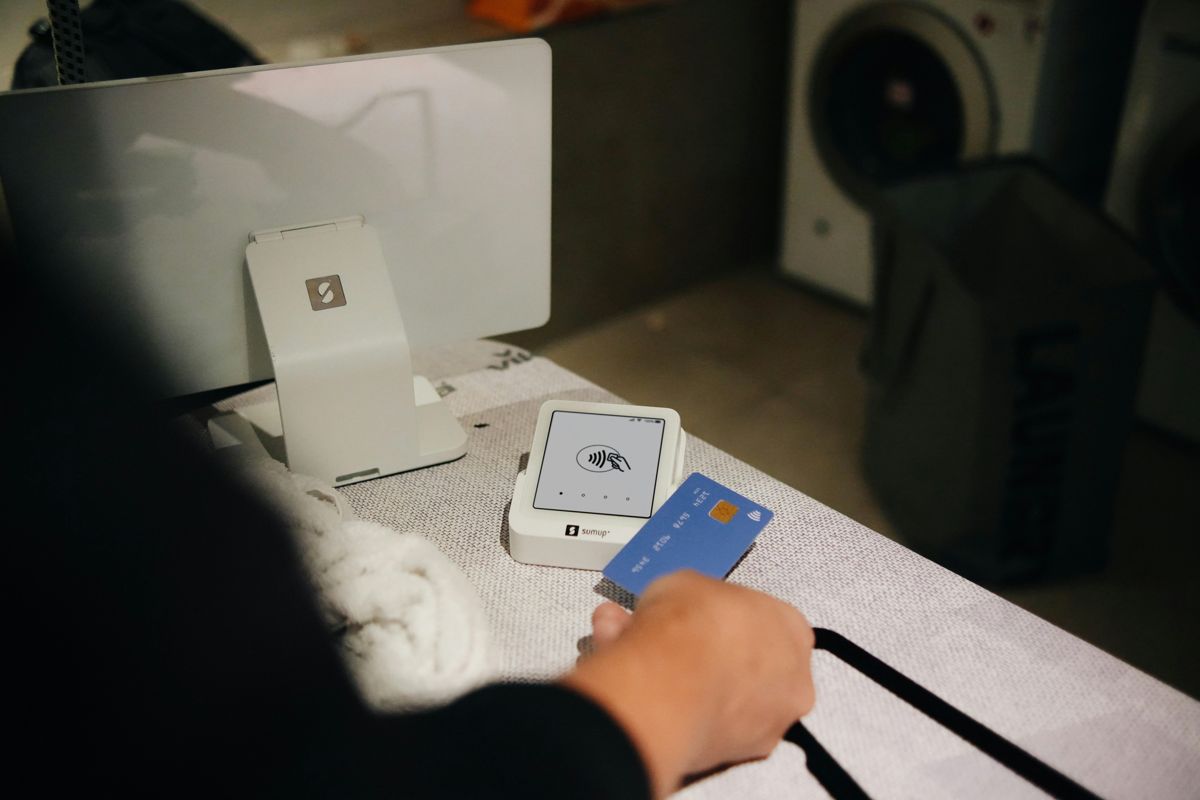The Ultimate Guide: Spaced Repetition

Table of Contents
Understanding Spaced Repetition: The Basics
Hello, fellow professionals! Today, we’re diving into a fascinating topic that will revolutionize the way you learn and retain information - spaced repetition. This repetitive learning method, often shortened as ‘sr’, ‘spaced repetition’, has been gaining traction in educational circles for its impressive ability to boost memory retention.
In essence, spaced repetition is a learning technique that emphasizes the importance of intervals between study sessions. It’s like planting seeds and returning to water them at specific intervals instead of watering them continuously. The idea is simple yet profound: by revisiting information at strategic times, we enhance our ability to recall it effectively.
So, how does spaced repetition work? Let’s break it down. Imagine you’re learning a new language using flashcards, also known as ‘SRS flashcards’. After studying a word or phrase, you’d set a reminder to revisit that information after a certain period (hence the term ‘spacing’). The magic happens when you successfully recall the information during these intervals - your brain recognizes it as something important and strengthens the neural connections associated with it.
In the sections ahead, we’ll delve deeper into the science behind spaced repetition, explore different spaced repetition programs, and offer tips on creating effective SRS flashcards for learning. But first, let’s understand why spacing study methods are essential for memory retention. Stay tuned!

The Science Behind Spaced Repetition Method
Have you ever wondered why some information sticks in your mind while others seem to slip through the cracks? The answer lies in a technique known as spaced repetition. This learning method, backed by decades of scientific research, has revolutionized how we approach studying and remembering information.

At its core, spaced repetition is based on the observation that forgetting follows a predictable curve.
At its core, spaced repetition is based on the observation that forgetting follows a predictable curve. Initially, you’ll recall new information effortlessly. However, as time passes, your memory will start to fade unless reinforced through practice. The spacing study method capitalizes on this phenomenon by strategically spacing out learning sessions to maximize retention and minimize forgetting.
The science behind spaced repetition is rooted in the concept of ‘desirable difficulty.’ This theory suggests that challenging our brains with slightly difficult tasks enhances learning and memory formation. By interspersing easy and hard repetitions, the spaced repetition system creates an optimal level of challenge, fostering long-term retention. It’s like planting seeds in a garden—water them too frequently, and they’ll grow weak; space out your waterings, and you’ll foster strong, resilient plants. The same principle applies to learning with spaced repetition programs: give your brain the right amount of ‘spacing’ to ensure optimal growth and memory retention.
Mastering the Spaced Repetition System
Have you ever felt like cramming information before an exam was the most efficient way to learn? Well, it turns out that the spaced repetition system (SRS) might just change your study game forever. This revolutionary learning technique can help you remember information for longer periods, making your studying more effective and less stressful.
The spaced repetition method is a repetitive learning method that involves spreading out review sessions over increasing intervals of time. Instead of cramming all the information at once, SRS allows us to take advantage of our brain’s natural forgetting curve by reinforcing memories just before they fade away. By using SRS flashcards and spaced repetition software, you can easily incorporate this technique into your study routine.
By using SRS flashcards and spaced repetition software, you can easily incorporate this technique into your study routine.
So, how do you master the spaced repetition system? First, choose a program that suits your learning style and preferences. There are numerous options available, from simple flashcard apps to complex computer programs. Once you’ve chosen your SRS software, create effective flashcards by breaking down complex information into bite-sized pieces and using visuals when possible. Finally, implement the spaced repetition study method in your daily routine by consistently reviewing your flashcards at intervals determined by the program. With practice, you’ll find that mastering the spaced repetition system will revolutionize your learning process and improve your memory retention.
Choosing the Right Spaced Repetition Program
As a marketing professional, you’re always on the lookout for innovative strategies to stay ahead of the game. One such strategy that has been making waves in the learning and memory improvement sphere is the spaced repetition system (SRS). But with so many spaced repetition programs available today, how do you choose the one that suits your needs best?
The spaced repetition method revolves around the concept of repetitive learning—revisiting information at increasing intervals to help it stick in your long-term memory. This revolutionary technique has been proven effective across various fields, from language learning to professional development. However, not all spaced repetition software is created equal.
The right spaced repetition program is one that seamlessly integrates into your learning routine, providing a personalized and effective experience.
To make an informed decision, consider factors such as user interface, customization options, and compatibility with your learning style. For instance, if you’re a visual learner, look for SRS programs that incorporate images or videos in their flashcards. On the other hand, if you prefer a more structured approach, opt for programs with built-in scheduling features to help you stay organized.
Ultimately, the right spaced repetition program is one that seamlessly integrates into your learning routine, providing a personalized and effective experience. So take your time researching different options, read user reviews, and even try out demo versions before making your choice. Remember, investing in the perfect SRS tool could be the key to unlocking new levels of productivity and success in your career.
Creating Effective SRS Flashcards for Learning
Hello fellow marketing professionals! Today, we delve into the art of crafting effective Spaced Repetition System (SRS) flashcards that will revolutionize your learning journey. Let’s face it; not all information is easy to remember. The key lies in structuring your SRS flashcards effectively so they stick like glue to your long-term memory.
The foundation of any successful Spaced Repetition Method (SRM) depends on the quality and structure of your flashcards. A good flashcard should be a concise, bite-sized piece of information that appeals to your senses. For instance, incorporating images or using colors can make the content more memorable and engaging.
A good flashcard should be a concise, bite-sized piece of information that appeals to your senses.
Now that we’ve established the importance of SRS flashcards, let’s take a look at some best practices for creating them. Firstly, ensure each card contains only one key concept. Overloading your brain with multiple ideas at once can lead to confusion and poor retention. Secondly, use active recall when designing your flashcards – this means testing your memory by retrieving the information instead of simply reading it. Last but not least, review and adjust your cards regularly based on their performance. After all, the beauty of SRM lies in its adaptability to individual learning patterns.
Embrace the power of effective SRS flashcards as part of your study routine, and watch your knowledge retention soar! Stay tuned for more insights on maximizing benefits from this amazing learning technique in our upcoming sections. Happy studying!
Implementing Spaced Repetition Study Method in Your Routine
Imagine a well-oiled machine, smoothly running its course without a hitch - that’s the beauty of integrating spaced repetition into your study routine. But how do you get there? Let’s dive deep into this transformative learning method.
First and foremost, it’s essential to choose the right spaced repetition program that aligns with your needs, preferences, and learning style. From popular spaced repetition software like Anki, Memrise, or SuperMemo, there’s a plethora of options out there. Once you’ve selected your tool, create effective SRS flashcards to make the most of your time invested.
Remember, the magic lies in spacing. Don't cram all your flashcards at once; instead, space them out over time.
Now, here comes the fun part: Implementing spaced repetition in your everyday routine. As with any new habit, consistency is key. Incorporate spaced repetition study into your daily schedule, making it a non-negotiable part of your learning process. Start by dedicating just 10 to 15 minutes each day to review and add new flashcards to your deck.
Remember, the magic lies in spacing. Don’t cram all your flashcards at once; instead, space them out over time. As you make progress, the system will automatically adjust when to present you with each card based on your recall performance. This iterative approach ensures that knowledge stays fresh in your memory for the long haul. So, stay patient and persistent, my friend –- spaced repetition is an investment worth making!
The Role of Spacing in Memory Retention: A Closer Look
In the vast landscape of learning and memory retention, one technique has emerged as a beacon of hope - the spaced repetition method. But what makes this repetitive learning method so special? Let’s delve deeper into the science behind it and explore the role of spacing in memory retention.

Imagine you’re planting seeds in a garden. If you water them daily, they might grow quickly initially but will soon exhaust their resources. However, if you water them less frequently, allowing the soil time to absorb and nourish each seed, they’ll flourish over the long haul. This is an apt analogy for spaced repetition. When we study something repeatedly with a gap in between sessions, we’re giving our brains the chance to process and consolidate information effectively.
Spaced repetition counteracts the forgetting by strategically revisiting information at intervals that maximize retention while minimizing effort.
Research has shown that spacing, rather than cramming, results in better retention over time. This principle is based on the Forgetting Curve, which demonstrates that we forget around 40% of what we learn within an hour, 70% after a day, and up to 90% after a week without reinforcement. Spaced repetition counteracts this forgetting by strategically revisiting information at intervals that maximize retention while minimizing effort.
By using spaced repetition software or creating srs flashcards, we can implement this study method in our daily routines. The key is to choose the right program that suits our learning style and needs, and then develop effective flashcards tailored to the subject matter. By following these steps and embracing the power of visual spaced repetition for knowledge retention, we can unlock the full potential of this transformative technique and reap the benefits of improved memory and learning.
The Power of Visual Spaced Repetition for Knowledge Retention
Ever wondered why a picture is worth a thousand words? It turns out that our brains process visual information faster than text. This is where the power of visual spaced repetition comes into play, making learning more efficient and enjoyable.
Visual spaced repetition leverages the human brain’s natural tendency to remember images better than text. By creating engaging, visually appealing flashcards, you can significantly boost your knowledge retention. Imagine a deck of SRS flashcards filled with vibrant graphics instead of plain texts. That’s the power of visual spaced repetition!
Remember Alice, who struggled to remember key concepts during her marketing studies? Once she started using visual SRS flashcards, she saw an instant improvement in her ability to recall information. The colorful images and concise text helped her process and retain information faster than before.
So, if you’re looking to upgrade your spaced repetition study method, don’t forget the power of visuals! Choose a spaced repetition software that offers customizable flashcards, allowing you to create eye-catching visual content that will enhance your learning experience and improve your knowledge retention.
Maximizing Benefits from the Spaced Repetition Technique
Imagine you’ve just embarked on a thrilling journey through the labyrinth of knowledge – an odyssey where every memory forged is destined to last. The spaced repetition technique, your trusty compass, promises to guide you on this path. But how do we unlock its full potential?

By using spaced repetition software, you can cultivate your mind, ensuring a bountiful harvest of memories that remain lodged firmly in the recesses of your brain.
The secret lies in understanding that mastering the spaced repetition system isn’t a sprint but a marathon. This repetitive learning method is like nurturing a garden – consistency and care reap rich rewards over time. By using spaced repetition software, you can cultivate your mind, ensuring a bountiful harvest of memories that remain lodged firmly in the recesses of your brain.
The magic of visual spaced repetition adds an extra layer of effectiveness to this learning technique. Imagine visualizing concepts as vivid mental snapshots – each image etched onto the canvass of your mind. This powerful tool doesn’t just aid recall; it creates a vivid, memorable experience that resonates with our sensory-rich brains. So, armed with srs flashcards and a disciplined approach, you stand poised to conquer the vast expanses of knowledge. Embrace the spaced repetition study method, and witness your learning journey transform into an exhilarating adventure towards mastery.
A Comprehensive Guide to SRS Learning and Memory Improvement
Imagine a tool that could help you retain information more effectively, boost your learning process, and save precious time in the process. That’s where Spaced Repetition Systems (SRS) come into play. SRS is a repetitive learning method that leverages the human brain’s natural tendency to forget to enhance long-term memory retention.
But how does it work? The science behind SRS lies in the Ebbinghaus Forgetting Curve, which suggests that our brains naturally forget information over time. By strategically spacing out learning sessions and reviewing information at specific intervals, SRS ensures that the material remains fresh in your memory, ultimately leading to better comprehension and retention.
Now, let’s get hands-on with this incredible tool. Choosing the right Spaced Repetition Program can be a game-changer for your learning journey. With various spaced repetition software options available, it’s essential to find one that suits your needs, preferences, and lifestyle. From Anki to Memrise, there’s a spaced repetition program out there for everyone.
By strategically spacing out learning sessions and reviewing information at specific intervals, SRS ensures that the material remains fresh in your memory, ultimately leading to better comprehension and retention.
Once you’ve picked your program, creating effective SRS flashcards is key. These flashcards will serve as the foundation of your learning process. Make sure they are concise yet informative, with a clear focus on the essential facts and concepts you want to remember. Remember, less is more when it comes to flashcards!
As you begin implementing spaced repetition study methods into your routine, keep in mind that consistency is crucial for optimal results. While it may take some time to see the full benefits of this method, with dedication and persistence, SRS can revolutionize the way you learn and retain information. Stay tuned for more tips on maximizing the benefits of spaced repetition techniques and optimizing your SRS journey!
Exploring the Advantages of Using Spaced Repetition in Studies
Have you ever found yourself cramming for a test or reviewing material hours before an exam only to forget it moments later? Or perhaps, you’ve experienced the frustration of pouring over notes, reading and rereading the same information with little improvement in retention. Well, dear professionals, we might have just the solution to your study woes: Spaced Repetition (SR).

The concept of SR is a repetitive learning method that leverages the principles of neuroscience to enhance memory retention. Unlike traditional study methods where you repeatedly review information at short intervals, SR encourages spacing out those reviews over longer periods, thus maximizing benefits from the spaced repetition technique.
By employing this clever trick, our brains are given time to consolidate memories, making them more robust and less prone to fading. This means that when you’re faced with an important presentation or a critical exam, your memory will serve you well - thanks to the power of spaced repetition! And it’s not just about remembering facts; SR can be applied to a wide range of subjects, making it a valuable tool for students and professionals alike. So, why not give it a try? Grab one of the many spaced repetition software or create your own srs flashcards, and watch as your study routine undergoes a transformative shift!
Optimizing Your Spaced Repetition Journey: Tips and Tricks
You’ve mastered the basics of spaced repetition, delved into its scientific foundations, and perhaps even chosen your preferred spaced repetition program. Now comes the exciting part - optimizing your spaced repetition journey! Here are some essential tips and tricks to get the most out of this revolutionary learning method.
First off, consistency is key when it comes to spaced repetition success. Make a study schedule that works for you and stick to it diligently. Just like any other habit, the more regularly you practice spaced repetition, the easier it becomes.

Another crucial aspect of optimizing your spaced repetition journey lies in the creation of effective SRS flashcards. Aim for clear, concise, and easy-to-remember phrases or images on each card. Remember, less is more when crafting your flashcards. The goal is to make it as simple as possible for your brain to recall the information.
Optimizing your spaced repetition journey requires dedication, creativity, and an open mind.
Lastly, don’t shy away from experimentation. Tinker with different spaced repetition programs, try out various study techniques, and find what works best for you. The beauty of spaced repetition lies in its adaptability, so take advantage of that flexibility to create a customized learning experience tailored just for you.
In conclusion, optimizing your spaced repetition journey requires dedication, creativity, and an open mind. With the right tips, tricks, and attitude, you’ll be well on your way to unlocking your full potential for learning and memory improvement through this powerful technique!







